ROMANIA
Brasov

Brasov
Brasov
Brasov (Kronstadt in German) is a city in Romania and the capital of Brasov province. Brasov is one of the largest and most attractive cities in Romania. It is located in the central part of the country. Brasov is located 160 km from Bucharest, the Romanian capital. Brasov is surrounded by the Carpathians, at the crossroads of the Eastern and Southern Carpathians.
The city is known for being the birthplace of Romania's national anthem. There are 276,914 inhabitants living in the city according to the last official census of 2010. The metropolitan area of Brasov was established in 2005. There are 400,000 inhabitants in this area. Numerous tourists visit this city in Transylvania, and admire the historic center, which has been beautifully restored.
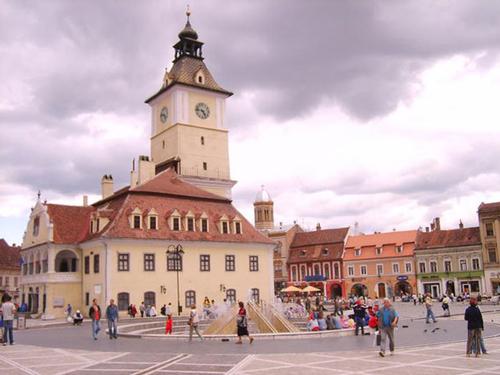 Brasov CenterPhoto: Alessio Damato CC 3.0 Unported no changes made
Brasov CenterPhoto: Alessio Damato CC 3.0 Unported no changes made
Location
The coordinates of Brasov are: 45°40 North latitude and 25°37 East longitude.
Brasov is located in the central part of the country. It is surrounded by the Southern Carpathians and is part of Transylvania. Across the mountains to the south and east lie Wallachia and Moldavia. To the west the Banat region and to the north the rolling hills of Northern Transylvania. Brasov has an area of 74 km² and is located at an altitude of 650 meters.
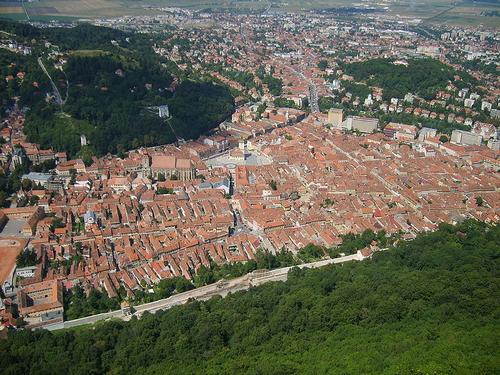 Brasov seen from a hillPhoto: Alessio Dalmato CC 3.0 Unported no changes made
Brasov seen from a hillPhoto: Alessio Dalmato CC 3.0 Unported no changes made
Brasov is a good starting point for tours through Romania. The city is located between the various tourist destinations in the country. The seaside resorts on the Black Sea, the monasteries in the north of Moldova and the well-preserved wooden churches of Maramures are easily accessible. It is also the largest city in the mountains.
Weather
Brasov has a moderate continental climate with cold and wet weather in the mountains. Summers are hot with cooler nights. Winters are cold with a lot of snow. Spring and fall are mild with a lot of rainfall. The average annual temperature is 7.6° C and the annual humidity is 75%. The temperature in summer rises to 35° C and the lowest recorded temperature in winter is -30° C. The annual rainfall is 1300 mm in the mountains and 600 mm in the valleys. The predominant wind direction is west.
From May to September, temperatures hover around 23° C. It is the best time to visit this interesting city. If you are a winter sports enthusiast, you will find well-equipped ski areas in the Brasov area. Among them, Poiana Brasov is the most popular Romanian ski resort.
History
The oldest traces of human settlement at the site of the Brasov today date back to the Neolithic age, about 9500 BC. Surrounded by mountains on three sides, Brasov was a perfect place for a medieval settlement. Founded by the Teutonic Knights in 1211, the Old Town is one of the best-preserved cities in all of Europe.
Known as the Transylvanian Saxons, German settlers played a decisive role in Brasov's development. They were invited by King Geza II of Hungary in the 12th century to develop cities, build mines and work the land. Kronstad (Brasov) was built by the German order in 1211. Fortifications were built around the city and continuously expanded. The towers were maintained by the various craft guilds. The construction of these ramparts took from 1400 to 1650.
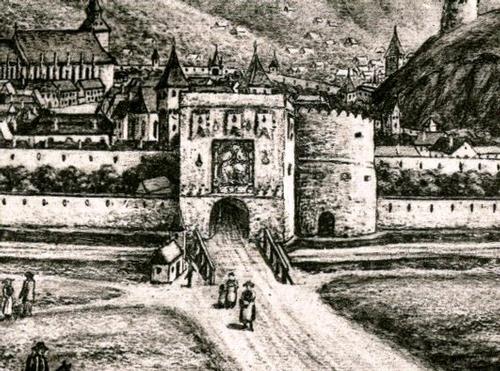 Brasov 1689Photo: Public domain
Brasov 1689Photo: Public domain
Part of the defensive wall, once 40 feet high, seven feet thick and two miles long, can still be seen, although most of it was demolished in the 19th century to make way for urban expansion. A few of the original seven bastions can still be seen. The fortifications were recently restored with the help of UNESCO funds.
From the 17th to the 19th century, Romanians claim national, political and cultural rights, supported by Romanians from all other provinces. In 1838 they got the first Romanian newspaper and the first Romanian higher education institutions.
During the First World War, the city was occupied by Romanian troops in 1916. Deputies of the Saxons of Transylvania supported the newly formed Romanian state in 1918. The period between the two World Wars was a time of booming economic and cultural life in general. At the end of World War II, after Romania became a communist country, many ethnic Germans were forcibly deported to the Soviet Union and many others emigrated to West Germany. As in many other cities in Transylvania, Brasov is also home to a significant ethnic Hungarian minority.
Sights
 Brasov at NightPhoto: Catalin.coman CC 3.0 Unported no changes made
Brasov at NightPhoto: Catalin.coman CC 3.0 Unported no changes made
Surrounded by the Southern Carpathians, Brasov offers a great number of historical sights with a magnificent splendor of Gothic, Baroque and Renaissance architecture. Brasov is one of the most visited places in Romania and its distinct medieval atmosphere makes it attractive to many foreign tourists.
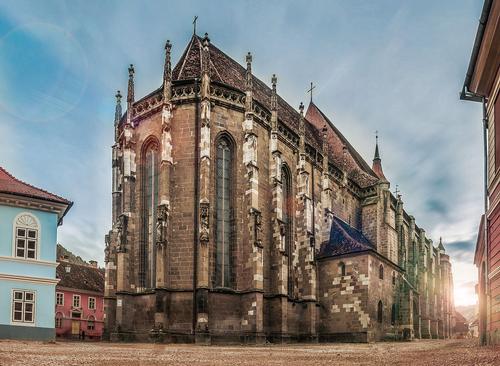 Biserica Neagra BrasovPhoto: Vlad Moldovean CC 3.0 Romania no changes made
Biserica Neagra BrasovPhoto: Vlad Moldovean CC 3.0 Romania no changes made
In the old town you can see one of the narrowest streets in Europe. The Strada Sforii is about four meters wide. If you take a walk on the old town hall square (Piata Sfatului), you can enjoy colorfully painted and beautifully finished baroque buildings. Enter the Black Church (Biserica Neagra), the largest Gothic church in Romania. The interior of the church is impressive and you can see one of the largest organs in Eastern Europe. The main square is in the heart of old medieval Brasov. The square is surrounded by beautiful merchant houses with red roofs. In the center of the square you can see the old town hall from 1420, now transformed into the museum of the history of Brasov.
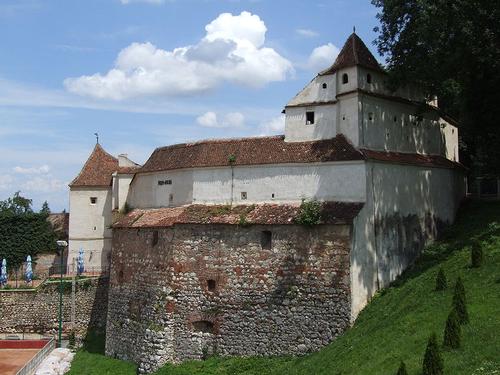 Weaver's bastion BrasovPhoto: Pudelek CC 3.0 Unported no changes made
Weaver's bastion BrasovPhoto: Pudelek CC 3.0 Unported no changes made
The fortifications are an attraction in themselves. Featuring a newly restored 16th century bastion with four levels, accessible by stairs. Medieval objects are exhibited on three levels. The White Tower is a semicircular that was completed in 1494. A wooden spiral staircase offers a beautiful view of the old city. The black tower is a square castle built in 1494 and stands on top of a rock on the Starja hill. The tower got its name from a heavy fire in 1559 when it was struck by lightning. The four floors have been recently restored with a pyramid-shaped glass roof. Climb all the way to the top for a panoramic view of the Black Church. Catherine's gate from 1559 is the only original gate from the Middle Ages.
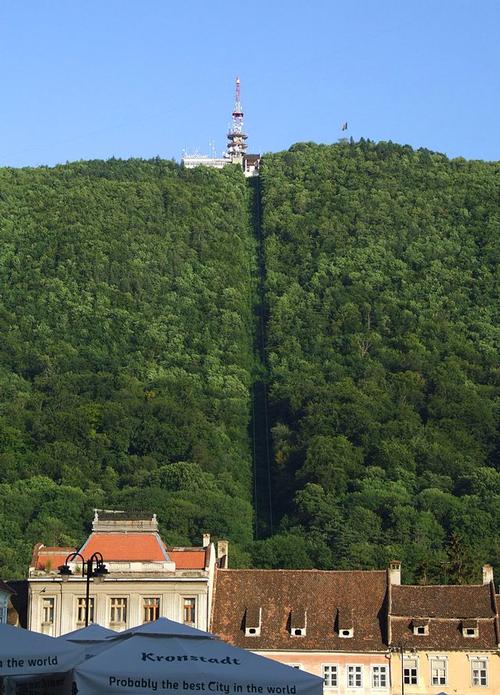 Cable Car to Tampa BrasovPhoto: Pudelek CC 3.0 Unported no changes made
Cable Car to Tampa BrasovPhoto: Pudelek CC 3.0 Unported no changes made
Brasov is located at the foot of Mount Tampa. Along the southeastern side of the defensive walls is a romantic alley lined by ancient trees that leads to the top where the original fortress was built. Hiking to the top takes about an hour, you can also take the cable car to the top of the mountain (960 meters high) for the best view of the old town.
Tips
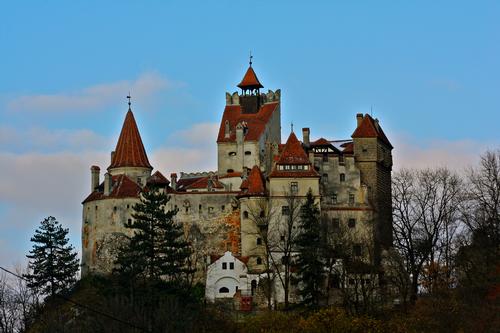 Bran Castle near BrasovPhoto: Kyle Taylor (CC BY 2.0) no changes made
Bran Castle near BrasovPhoto: Kyle Taylor (CC BY 2.0) no changes made
At 30 km from Brasov, in the middle of the Carpathians in Transylvania, you will find Bran Castle. This castle is (wrongly) known because of the cruel ruler Vlad Dracula. The Teutonic Knights built a wooden fort in the early 13th century. King Sigismund of Hungary started the construction of a stone castle in 1377. The castle was strategically located high in the mountains, along the road between Transsylavania and Wallachia. It is a fairytale castle that takes you into the fantasy of Irish writer Bram Stoker, creator of Dracula. There will be a museum dedicated to Dracula. Nearly half a million people visit this castle every year.
Useful links Brasov
BBC Country ProfilesWorld Fact Book Explore all Countries
How to call
Last updated December 2025
Copyright: Team - The World of Info